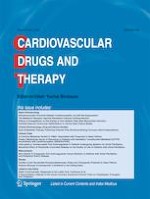Erschienen in:

23.03.2020 | Review Article
Non-Vitamin K Antagonist Oral Anticoagulants Versus Warfarin in Patients with Atrial Fibrillation and Peripheral Artery Disease: a Systematic Review and Meta-Analysis
verfasst von:
Xiang-Zhong Liao, Yong-Hui Fu, Jian-Yong Ma, Wen-Gen Zhu, Ping Yuan
Erschienen in:
Cardiovascular Drugs and Therapy
|
Ausgabe 3/2020
Einloggen, um Zugang zu erhalten
Abstract
Background
The efficacy and safety of non-vitamin K antagonist oral anticoagulants (NOACs) compared with warfarin in patients with atrial fibrillation (AF) and peripheral artery disease (PAD) remain largely unknown. Therefore, we conducted a meta-analysis to explore the effects of NOACs versus warfarin in this population.
Methods
We systematically searched the PubMed and Embase databases, with no linguistic restrictions, until December 2019 for relevant randomized controlled trials (RCTs) and observational studies. A random-effects model using an inverse variance method was selected to pool the risk ratios (RRs) and 95% confidence intervals (CIs).
Results
A total of six studies (three post hoc analyses of RCTs and three cohort studies) were included in this meta-analysis. Among AF patients treated with NOACs and warfarin, individuals with PAD had increased rates of all-cause death (RR = 1.26, 95% CI 1.07–1.48) and cardiovascular death (RR = 1.32, 95% CI 1.06–1.64) compared with those without PAD. In AF patients with PAD, we observed a similar risk of thromboembolic events, bleeding, and death with NOACs as with warfarin. In addition, there were no interactions between PAD and non-PAD subgroups regarding any of the reported outcomes of NOACs versus warfarin in AF patients (all Pinteraction > 0.05).
Conclusions
Based on current evidence, AF patients with PAD are at a higher risk of death than those without PAD. Efficacy and safety outcomes with NOACs are comparable to those with warfarin, suggesting that the use of NOACs has effects similar to warfarin in AF patients with concomitant PAD.











